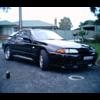Xr6 Gt35r
Announcements
-
Latest Posts
-
This is the only point I can access with any floor jack and my car is SUV height - What's the actual suggested alternative here? I have also driven up on blocks in the past, but lets say you have a problem and the car is on it's wheels already and can't be driven up/off anything? Not a huge fan of bits of wood being spat in random locations either (it hasn't happened, but what-ifs occur) Perhaps I would also really enjoy having a quickjack :p Time to google quickjacks.
-
By dawhitehonky · Posted
The wires look to be a healthy gauge, more than I would think the pump needs. I guess another concern is if the FPCM will be happy with the extra current draw. I have heard they are a bit sensitive. -
It will be fine. The real question is whether the existing wiring is fat enough for the current drawn by the bigger pump. The 342 is not that hungry, but it will be well worth pointing an IR pyrometer, or even better, a thermal camera, at the pump hat wiring when it is running, just to make sure. Or, you know, just touch it to see how hot it is.
-
By dawhitehonky · Posted
Hi guys, Sorry to revive such an old post! The fuel pump in my M35 has finally given up, the car has been sitting for 3 years so I'm not surprised. I bought a Walbro GSS342 of Scotty some time ago, so I'll throw that one in. My question is, if my car has no performance mods at all, do I need really to mod the wiring to supply constant 12V? or will the new pump be just fine at the reduced voltage at idle? Thanks guys..



.thumb.jpg.1b7f9b555236b5ea56c3fed20c733de8.jpg)
Recommended Posts
Create an account or sign in to comment
You need to be a member in order to leave a comment
Create an account
Sign up for a new account in our community. It's easy!
Register a new accountSign in
Already have an account? Sign in here.
Sign In Now